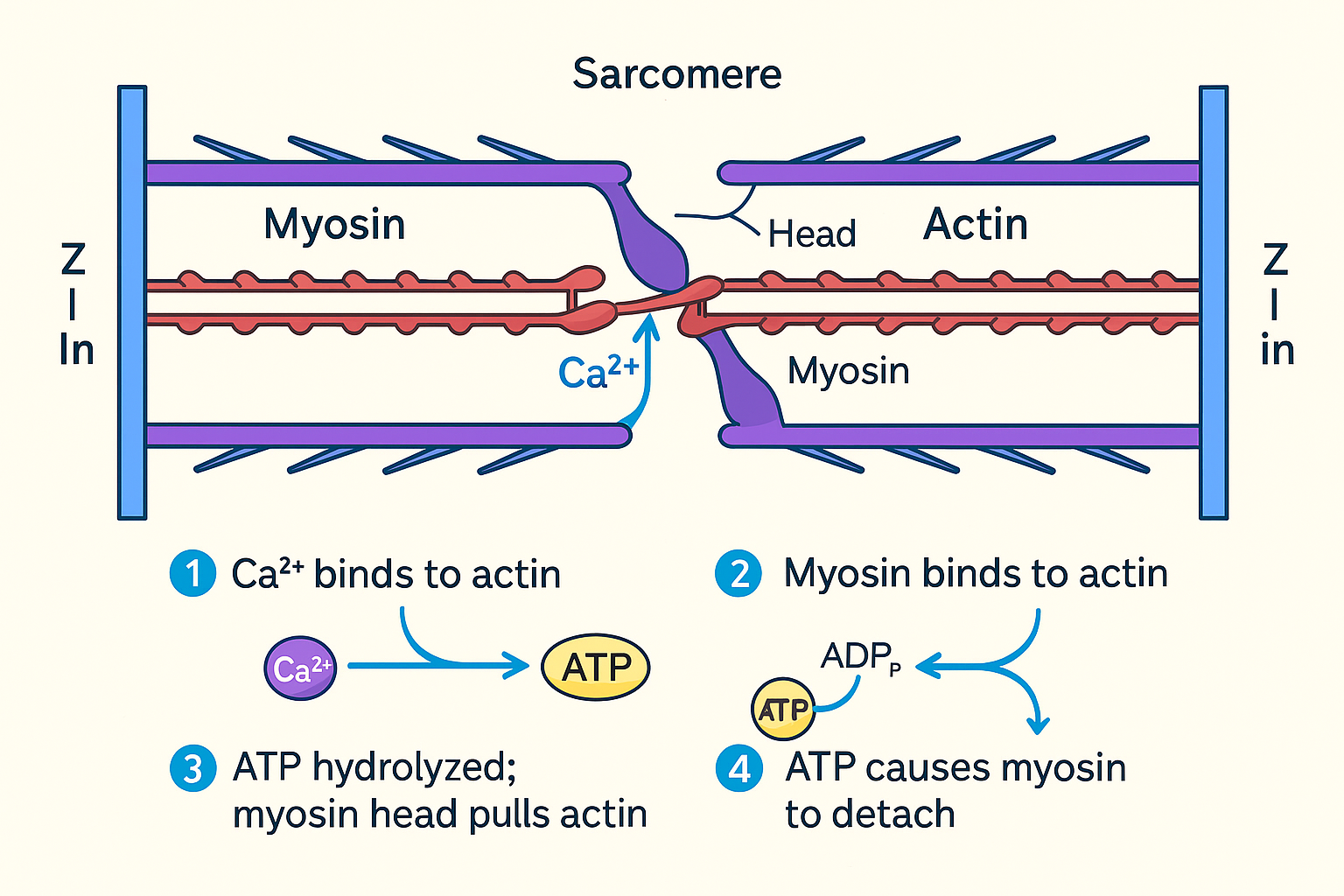💪 Muscle Contraction – Actin, Myosin & the Sliding Filament Theory
Muscle contraction is one of the most tested physiology topics on the DAT—and it pulls in anatomy, biochemistry, and signaling all at once. You’ll need to understand how contraction happens, what calcium and ATP do, and the structure of a sarcomere.
Today’s blog breaks it down visually and logically—just how DAT likes it.
🔬 Key Structures in Muscle Fibers
| Structure | Description |
|---|---|
| Sarcomere | Functional unit of muscle contraction (Z-line to Z-line) |
| Actin | Thin filament pulled by myosin during contraction |
| Myosin | Thick filament with heads that bind and pull actin |
| Z-line | Defines the boundary of a sarcomere |
| T-tubules | Transmit action potentials into the muscle fiber |
| Sarcoplasmic Reticulum (SR) | Stores and releases calcium ions |
🧠 Mnemonic: “ZAM” – Z-line, Actin, Myosin (from outer to inner)
⚙️ The Sliding Filament Theory
| Step | Description |
|---|---|
| 1. Action Potential | Signal reaches muscle, depolarizes membrane |
| 2. Calcium Release | SR releases Ca²⁺ into cytoplasm |
| 3. Troponin Binding | Ca²⁺ binds troponin, shifting tropomyosin |
| 4. Cross-Bridge Formation | Myosin binds actin |
| 5. Power Stroke | ATP hydrolyzed → myosin pulls actin |
| 6. Detachment | New ATP causes myosin to release actin |
🧠 No ATP = no release = rigor mortis (testable DAT concept!)
📈 DAT-Style Practice Question
Q: What causes myosin to detach from actin during muscle contraction?
A: Binding of a new ATP molecule
✅ DAT loves ATP → release logic, calcium roles, and protein interactions
🎯 DAT Study Strategy
✅ Know sarcomere anatomy (Z-line to Z-line)
✅ Memorize calcium’s role: binds troponin
✅ Understand ATP’s 3 roles: detach, cock, power stroke
✅ Link contraction to physiology concepts (e.g., rigor mortis)
✅ Reinforce with KOTC visuals and mnemonics
Explore more at kingofthecurve.org/studyscience
🚀 Call-to-Action
Want to flex your DAT knowledge?
Download the KOTC App and access:
Sarcomere flashcards
Animated contraction sequences
DAT-style practice Qs
Curve Coin rewards for high-yield mastery
📲 Muscle through your DAT prep—with KOTC.
Frequently Asked Questions (FAQs)
-
Aim for 4-6 focused hours, ensuring you incorporate breaks to avoid burnout.
-
Practice mindfulness techniques, take practice exams under realistic conditions, and maintain a balanced lifestyle.
-
Set short-term goals, seek support from mentors, and reward yourself for small achievements.
-
Regular exercise improves focus, reduces stress, and enhances overall mental clarity.
-
KOTC offers personalized learning tools, gamification features, and adaptive question banks to help students stay on track without burnout.


